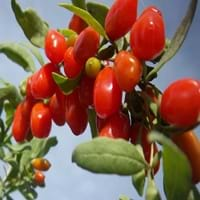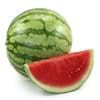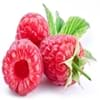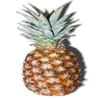Health Benefits
Arthritis prevention, Asthma treatment, Cancer prevention, Heart care, Prevents macular degeneration, Prevents rheumatoid
Anti-oxidant properties, Eye care, Helps in cartilage regeneration, Regulates Blood Sugar, Treatment of osteoarthritis
General Benefits
Anti-inflammatory properties, Boosts immune system, Digestive aid, Healing of wounds, Maintains healthy cholesterol level, Strengthens bones
Boosts immune system, Digestive aid
Skin Benefits
Anti-aging benefits, Hydrates skin, Skin revitalization, Treatment of acne, Treatment of dark spots
Anti-aging benefits, Reduces wrinkles, Treatment of skin diseases
Hair Benefits
Good conditioner, Promotes longer and healthier hair, Softening mask, Treatment of dandruff
Protects hair, Regulates hair growth
Allergy Symptoms
Abdominal pains, Carotenemia on excessive consumtion, Latex Allergy
Anaphylaxis, Itching, Sneezing, Wheezing
Side Effects
Allergic reaction, Skin problems, Possibly unsafe during pregnancy
May interact with some drugs
Best Time to Eat
As a snack in the late afternoon, Don't consume at night and before bed, Don't eat after meal
Any time except an hour after meal, Don't consume at night and before bed
Vitamin B5 (Pantothenic Acid)
Vitamin C (Ascorbic Acid)
Vitamin K (Phyllochinone)
Phytosterol
Not Available
Calories in Fresh Fruit with Peel
Not Available
Calories in Fresh Fruit without Peel
Not Available
Calories in Canned Form
Not Available
Type
Melon, Tree fruit
Berry
Season
All seasons
Autumn
Varieties
Coorg Honey Dew, Pusa Dwarf, Pusa Giant, Pusa Majesty, Pusa Delicious, Pusa Dwarf, Solo, Ranchi, Taiwan-785 and Taiwan-786
No Types
Color
Orange, Yellow
Scarlet red
Inside Color
Orange
Orange
Taste
Luscious, Sweet
Slightly bitter, Tart
Origin
Mexico, Central America
Unknown
Soil Type
Rocky, Sandy, Well-drained
Well-drained
Climatic Conditions
Warm, Without frosts
Cold, Hot
Facts about
- Papaya seeds show contraceptive effects in male monkeys.
- Their seeds are used as a replacement for black pepper in some nations due to peppery taste.
- Papaya is known by funny names like paw paw or papaw and the mamao.
- Study says a man named Li Qing Yuen used to eat goji berries daily and lived for 252 years.
- They are also known as wolfberries in India & China.
- This fruit is used for spiritual purposes at many places.
Other Countries
Brazil, Indonesia, Mexico, Nigeria
Canada, France, India, United States of America
Top Importer
United States of America
United States of America
Top Exporter
Mexico
China
Botanical Name
Carica papaya
Lycium barbarum
Synonym
Not Available
Wolfberry
Subkingdom
Tracheobionta
Tracheobionta
Division
Magnoliophyta
Unknown
Class
Magnoliopsida
Unknown
Subclass
Dillenhidae
Asteridae
Order
Brassicales
Solanales
Family
Caricaceae
Solanaceae
Species
C. papaya
L. barbarum
Generic Group
Papaya
Not Available
Difference Between Papaya and Gojiberry
We might think that Papaya and Gojiberry are similar with respect to nutritional value and health benefits. But the nutrient content of both fruits is different. Papaya and Gojiberry Facts such as their taste, shape, color, and size are also distinct. The difference between Papaya and Gojiberry is explained here.
The amount of calories in 100 gm of fresh Papaya and Gojiberry with peel is Not Available and 32.00 kcal and the amount of calories without peel is 43.00 kcal and Not Available respectively. Thus, Papaya and Gojiberry belong to Low Calorie Fruits and Low Calorie Fruits category.These fruits might or might not differ with respect to their scientific classification. The order of Papaya and Gojiberry is Brassicales and Solanales respectively. Papaya belongs to Caricaceae family and Gojiberry belongs to Solanaceae family. Papaya belongs to Carica genus of C. papaya species and Gojiberry belongs to Lycium genus of L. barbarum species. Beings plants, both fruits belong to Plantae Kingdom.









